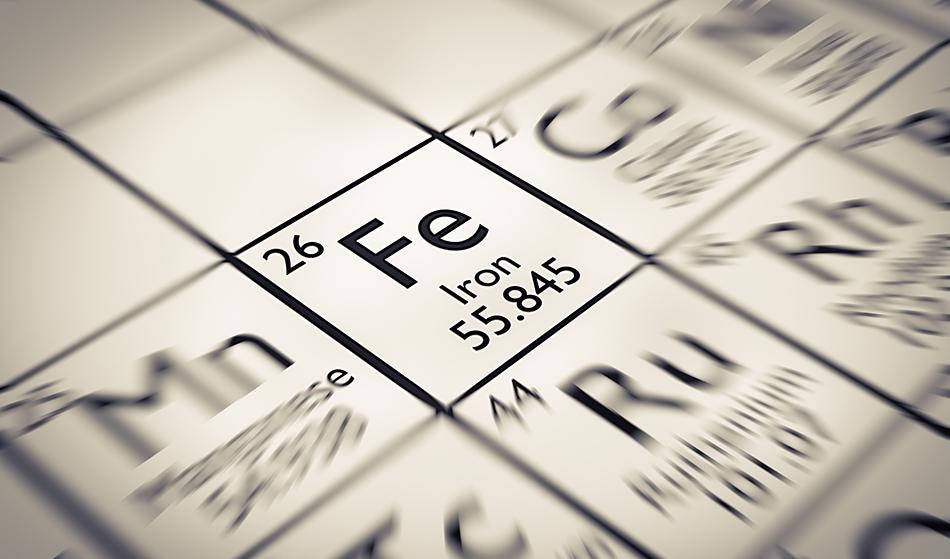Jul 30 2001

Antoine2K / Shutterstock
Iron (Fe) is a metal that has been known since ancient times. In fact, the Earth’s crust is made up of 5% of iron, which is the second most abundant metal after aluminum and the fourth abundant element after oxygen, silicon, and aluminum.
Significant amounts of iron are also present in the sun and several types of stars. Iron occurs naturally in the form of meteorites called siderites. Hematite (Fe2O3), magnetite, magnetic pyrites, and iron or carbonates are the common ores of iron.
Iron is derived from its ores by fusing to eliminate the sulfur, oxygen, and impurities. Usually, melting is performed in a blast furnace, directly in contact with the fuel, and also with limestone as a flux. These products combine with clay and quartz and form a slag, which is easily removed. The resultant product is crude pig iron. When crude pig iron is subjected to further remelting and refining procedures, it yields commercially pure iron.
Iron metal is greyish in color and highly ductile. Negligible amounts of carbon will considerably change the properties of iron. Moreover, iron-containing 0.15% of chemically blended carbon is referred to as “steel.” It is also chemically reactive (attacked by most acids) and corrodes easily, which is expedited by high temperatures or the presence of moist air.
Pure iron is allotropic and exists as a solid in two different crystal forms. These forms and occurrence are described below:
- Iron has a body-centered-cubic crystal structure from subzero to 700 °C. It is magnetic and recognized as alpha (α) iron.
- Iron changes from alpha (α) iron to beta (β) iron at 700 °C–928 °C. While its crystal structure does not change, it tends to lose its magnetism.
- Iron changes to a face-centered-cubic crystal structure at 928 °C–1530 °C which is identified as gamma (γ) iron.
- Above 1530 °C, the structure changes back to a body-centered-cubic crystal structure that is recognized as delta (δ) iron.
Common iron has a combination of four isotopes, although 10 other isotopes are known to exist.
Applications
Metallic iron is used in the following applications:
- As a main component of steels and ferrous metals/alloys
- When iron is alloyed with chromium, nickel, carbon, and numerous other elements, it becomes the most versatile metal, which is extensively used by man
- Manufacturing
- Electronics
- Heavy construction and building
- Magnets
- Fabricated metal products
- Automotive
- Transportation equipment
- Industrial machinery
- Toys and sport goods Instruments
- Carbonyl iron (Fe(CO)5) powder is utilized as a magnet core for medical applications and in high-frequency equipment
- Dicyclopentadienyl iron or ferrocene ((C5H5)2Fe) is used as a combustion control additive in fuels; it is even used for radiation resistance and as a heat stabilizer in lubricants and plastics
- Iron carbide is utilized in high-wear applications, like mine processing equipment.
- Peening shot, iron shot, tru-steel shot, kut-steel, steel blast, and steel grit are used as substitutes for sand in sandblasting operations ad also used in metal-cleaning operations and tumbling operations